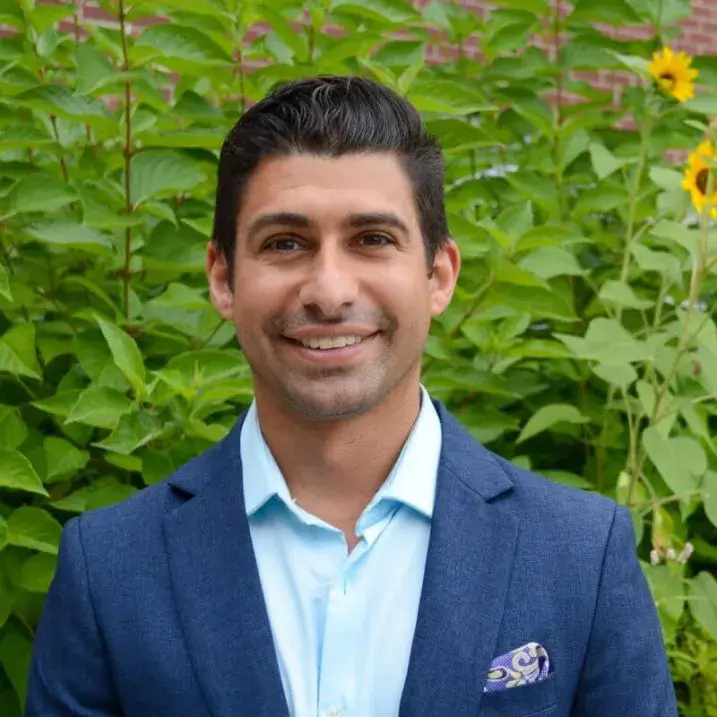Health Science Research Facility 120
Burlington, VT 05405
United States
Department of Molecular Physiology and Biophysics
JOURNALISTS: Need help scheduling an interview? Contact UVM media relations or search for a UVM expert.
Areas of expertise
Heart attacks, failure and disease, including mechanical, metabolic and electrical dysfunction; cardiac stiffening in heart disease and related therapies; biomedical device design and engineering; myocardial slices.
BIO
Even in the age of COVID-19, heart failure remains the leading cause of death in developed countries. While drugs can alleviate symptoms, there is no proven therapy to repair failing hearts. Complicating the situation, heart failure is highly diverse as patients exhibit varying degrees of mechanical, metabolic, and electrical dysfunction. However, most patients present with impaired left-ventricular filling, i.e. diastolic dysfunction, a thus-far therapeutically intractable symptom arising from increased ventricular stiffness.
In heart failure, ventricular stiffening is a runaway train where external stress throttles multiscale remodeling of myofilaments, the myocyte cytoskeleton and the extracellular matrix (ECM) that collectively impair cardiac function. External stress is sensed by the myocardium which responds by remodeling its ECM, the ECM in turn signals cardiomyocytes to alter their contractile performance and remodel their cytoskeleton. Yet in patients with heart failure, removing stress seldom reverses pathological remodeling. This is because signaling between pathologically remodeled cardiomyocytes and ECM continue to reinforce each other’s disease state. Much remains unknown about the molecular mechanisms of this cross-talk which makes it difficult to target therapeutically.
The Caporizzo lab's research focuses on understanding the molecular mechanisms that stiffen the heart, relating these changes to organ level physiology and developing therapies that reverse cardiac stiffening in heart disease.
Dr. Caporizzo received his Ph.D. in Materials Science engineering at the Univ. Pennsylvania in 2014. Matt joined Dr. Yale E. Goldman's lab at the Perelman School of Medicine at the Univ. Pennsylvania, where he built an interferometric scattering microscope and developed an analytical Markov model to describe the molecular motility of processive dimers which he applied to the bundle-selective motor myosin X. In 2016, Matt joined Dr. Benjamin Prosser's lab as a Postdoc and studied the contribution of the microtubule cytoskeleton to cardiac viscoelasticity. In 2022, Dr. Caporizzo joined the University of Vermont Larner College of Medicine as an Assistant Professor where he is actively continuing his research on the molecular mechanisms that stiffen the failing heart and developing platform to test new therapies that reverse pathological stiffening.
Publications
Bio
Even in the age of COVID-19, heart failure remains the leading cause of death in developed countries. While drugs can alleviate symptoms, there is no proven therapy to repair failing hearts. Complicating the situation, heart failure is highly diverse as patients exhibit varying degrees of mechanical, metabolic, and electrical dysfunction. However, most patients present with impaired left-ventricular filling, i.e. diastolic dysfunction, a thus-far therapeutically intractable symptom arising from increased ventricular stiffness.
In heart failure, ventricular stiffening is a runaway train where external stress throttles multiscale remodeling of myofilaments, the myocyte cytoskeleton and the extracellular matrix (ECM) that collectively impair cardiac function. External stress is sensed by the myocardium which responds by remodeling its ECM, the ECM in turn signals cardiomyocytes to alter their contractile performance and remodel their cytoskeleton. Yet in patients with heart failure, removing stress seldom reverses pathological remodeling. This is because signaling between pathologically remodeled cardiomyocytes and ECM continue to reinforce each other’s disease state. Much remains unknown about the molecular mechanisms of this cross-talk which makes it difficult to target therapeutically.
The Caporizzo lab's research focuses on understanding the molecular mechanisms that stiffen the heart, relating these changes to organ level physiology and developing therapies that reverse cardiac stiffening in heart disease.
Dr. Caporizzo received his Ph.D. in Materials Science engineering at the Univ. Pennsylvania in 2014. Matt joined Dr. Yale E. Goldman's lab at the Perelman School of Medicine at the Univ. Pennsylvania, where he built an interferometric scattering microscope and developed an analytical Markov model to describe the molecular motility of processive dimers which he applied to the bundle-selective motor myosin X. In 2016, Matt joined Dr. Benjamin Prosser's lab as a Postdoc and studied the contribution of the microtubule cytoskeleton to cardiac viscoelasticity. In 2022, Dr. Caporizzo joined the University of Vermont Larner College of Medicine as an Assistant Professor where he is actively continuing his research on the molecular mechanisms that stiffen the failing heart and developing platform to test new therapies that reverse pathological stiffening.
